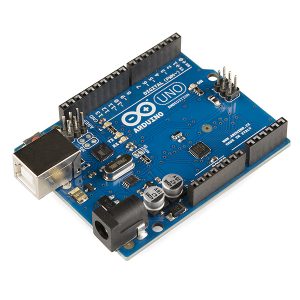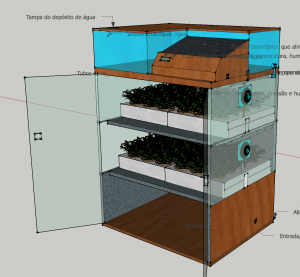I was tidying up my room today in the morning and I came across something I don’t use for quite a while, my arduino board. I bought it in the beginning of last year and I had used for several projects that I took part in with some friends and classmates.

Seeing it once again gave me the idea of presenting to you, briefly, the projects I took part in 12th grade.
Last year, I took, with my school, an arduino programming course in “Pavilhão do Conhecimento” near Tejo river (Pavilhão do Conhecimento is, for who doesn’t know, a place in Portugal where there are some interactive exhibitions for children as well as lectures and some fun courses like the one I mentioned).
Well, the first project I took part in was CanSat. CanSat is an either european or worldwide competition where you and your group have to create a can sized satellite with an arduino inside that should be able to do certain tasks. We had to make it do some mandatory tasks which were, if I am not mistaken, measuring the altitude and transmitting that data through an antena. The can sized satellite also had to have a parachute inside so it would survive the fall he was going to be a subject of. Apart from the mandatory tasks we were encouraged to develop some other tasks to complement our satellite. For example:
- Measuring the humidity
- Measuring the level of certain gases
- Release some kind of object
- Land in a predefined position
- Measure air quality

It was a really cool project, and we had a lot of fun. The only downside to the whole project was having to write a report in english describing our idea and how we were gonna develop our satellite as well as what calculus we had made to make sure it would work efficiently.
The second project I took part in high school involving arduino was FCT Nova Challenge. This was also a competition, a national one this time, and they challenged us to embrace and develop any project within any area of science or economics, allowing us to be creative and try our own ideas.
In a way it was my first contact with developing a real project because we had no guide, no help other than our teacher. We established a project and we had to solve every issue that would cross our way while developing it.
What we thought of doing was an independent domestic greenhouse, that needed almost no human attention. We created a model in a software called SkecthUp (a picture of the model can be found below) and the concept was:

We implemented some sensors connected to an arduino board. These sensors would measure some key factors like temperature and humidity. When those values went to unwanted levels, the arduino was responsible for providing a response. What he would do was turning on several devices connected to the structure in order to correct the values. The ideal values would depend on the preferences of the user (they depend of the plants the user wants to have inside the greenhouse.).
Other concern was dosing the water for the plants. After a lot of thought we decided to use a tube and a searing to create a simple, not electronic, pressure based irrigation system (you can see this system working in the video below the post).
The biggest problem we faced, a problem which we couldn’t properly solve, was how to regulate the temperature inside the greenhouse. We thought of several possibilities until we sticked with using a vacum inducer. What we thought was that, according to the Gases Laws (formula below), by increasing the pressure (p) inside the container we called greenhouse the temperature (T) inside certainly had to decrease. What we did’t properly consider was that by using a vacum inducing machine we would me changing the value of n (molecules) of gas inside the greenhouse, which, once again according to the law below, changed everything.
p . V = n . R . T
Finally, even tho it wasn’t very explored, we thought of creating a way of the greenhouse to communicate with a phone app in order to allow the user to check on the greenhouse even if he is not at the same place as the greenhouse.
This idea as well as the rest of the project are explained in this video we submitted (my apologies, the video is in portuguese because this project was enrolled in a national competition):
Image Sources:
- Arduino: https://sl.wikipedia.org/wiki/Slika:Arduino_Uno_-_R3.jpg
- CanSat Logo: http://www.epalmada.pt/index.php?page=noticiasjovens
